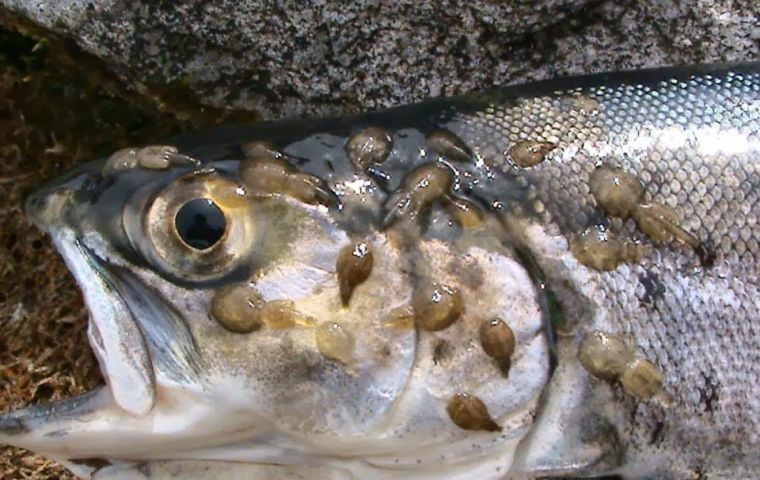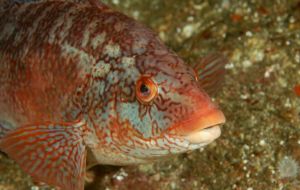MercoPress. South Atlantic News Agency
Breakthrough for cleaner fish and the Scottish salmon industry
 The breakthrough should help Scotland’s salmon farmers who seek to control sea lice through non-medicinal, environmentally friendly approaches.
The breakthrough should help Scotland’s salmon farmers who seek to control sea lice through non-medicinal, environmentally friendly approaches.  Currently, the majority of wrasse used as cleaner fish is wild caught following guidelines specified by Marine Scotland, RSPCA Assured and local fishery boards
Currently, the majority of wrasse used as cleaner fish is wild caught following guidelines specified by Marine Scotland, RSPCA Assured and local fishery boards A milestone has been reached in the production of cleaner fish in Scotland, particularly for the salmon industry, with two leading farmers completing the lifecycle of raising wrasse in a controlled environment. In a collaboration between Marine Harvest, Scottish Sea Farms and the Institute of Aquaculture at the University of Stirling, wild caught ballan wrasse (Labrus bergylta) have been bred for more than six years in a facility in Machrihanish.
The offspring have been reared from egg to adults of reproductive age, and in the spring those same offspring spawned for the first time. These eggs have now hatched and the team has also gone on to successfully wean the wrasse larvae and fry from live food to a dry diet
It’s hoped the breakthrough will help meet the growing demand for cleaner fish as Scotland’s salmon farmers increasingly seek to control sea lice through non-medicinal, environmentally friendly approaches.
Currently, the majority of wrasse used as cleaner fish is wild caught in accordance with guidelines specified by Marine Scotland, RSPCA Assured and local fishery boards to ensure it is done sustainably. However, it is the sector’s ambition to become self-sustaining and use only farmed stocks of cleaner fish – a goal that is now within grasp thanks to these latest advances.
Marine Harvest Scotland’s hatchery manager Paul Featherstone said: ‘Ballan wrasse provides highly effective, highly natural sea lice control and as such is in huge demand.
‘With this breakthrough, we now have proven procedures for breeding, weaning and rearing wrasse, which will both help ensure farmers have a more secure, controllable supply and reduce reliance on wild stocks.’
Scottish Sea Farms’ head of Fish Health, Ralph Bickerdike, added: ‘These landmark breakthroughs are the result of many years of collaborative research, involving a significant investment of time and money by farmers and academic partners intent on developing natural solutions to the control of sea lice.’
The two salmon farmers entered into the multi-million pound collaboration in 2011 with support from Innovate UK (formerly the Technology Strategy Board), then more recently the Scottish Aquaculture Innovation Centre and feed company BioMar. Under the terms of the collaboration, all insights gleaned will be shared with the wider sector for the common good.
Earlier this year, Marine Harvest won planning consent to build a new wrasse hatchery at Machrihanish, to help meet the growing demand for farmed cleaner fish. Once completed, the 20,000 sq ft plant is expected to produce around 800,000 wrasse a year.
It will be located adjacent to the existing Machrihanish wrasse hatchery, which produces around 200,000 farmed wrasse annually, in the joint farming programme with Scottish Sea Farms. Marine Harvest is also developing Anglesey Aquaculture in north Wales, as another hatchery for rearing wrasse.




Top Comments
Disclaimer & comment rulesCommenting for this story is now closed.
If you have a Facebook account, become a fan and comment on our Facebook Page!